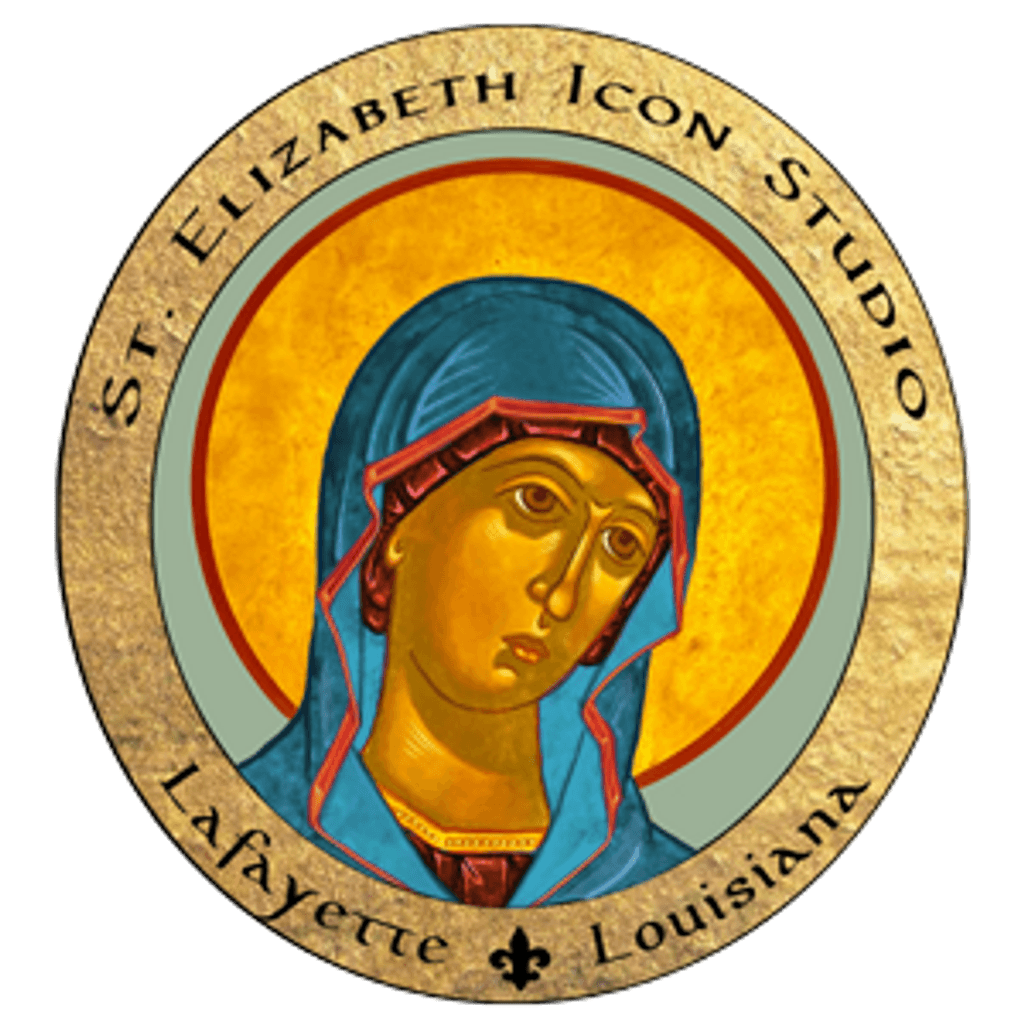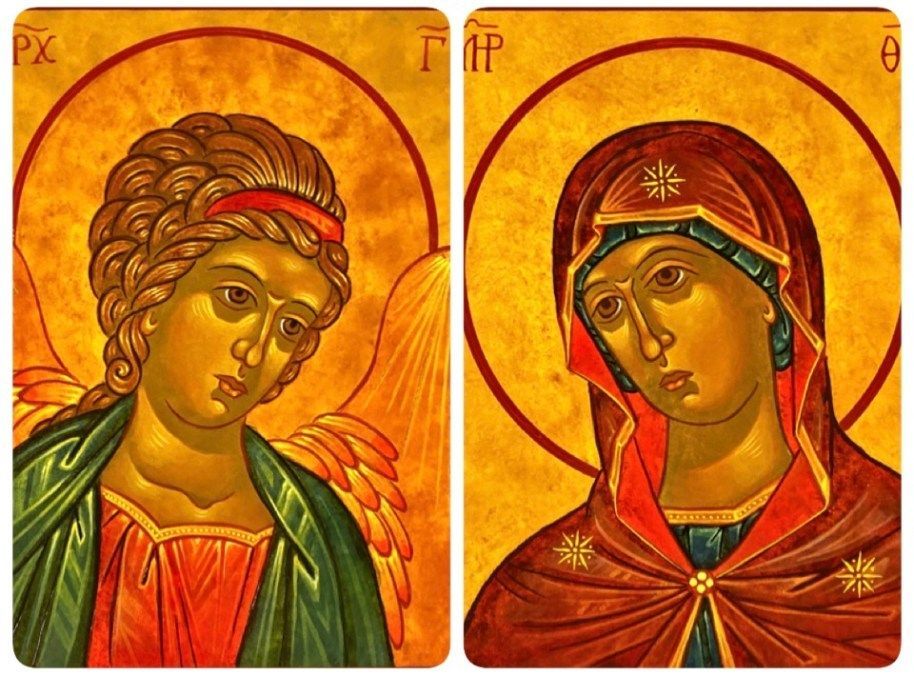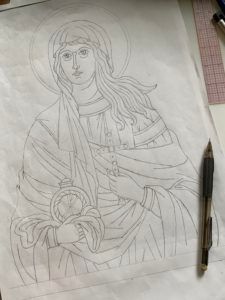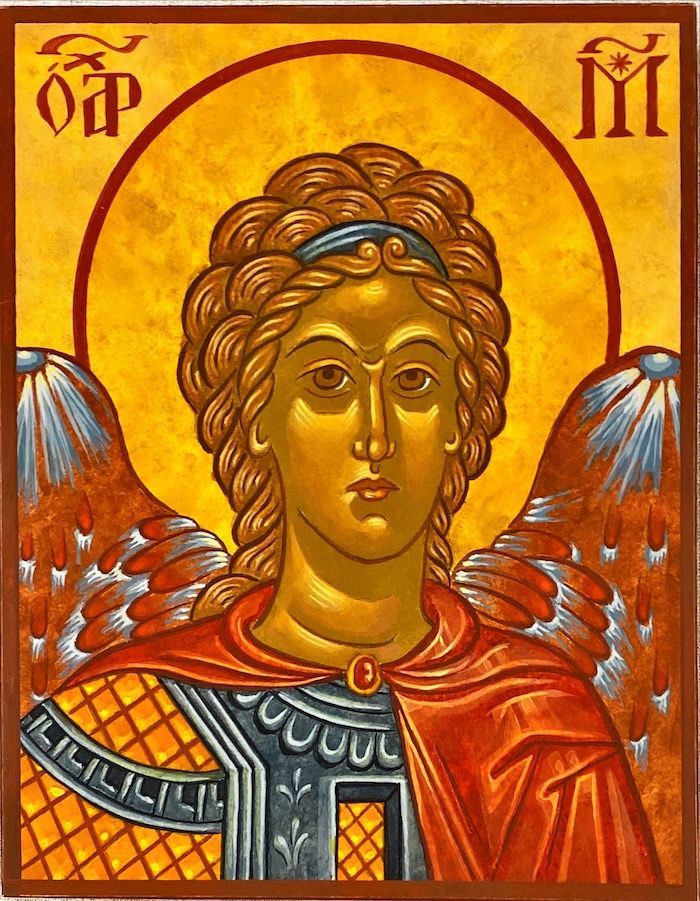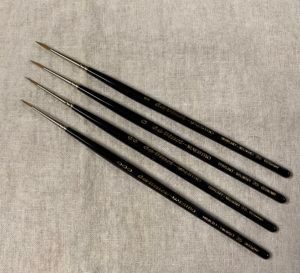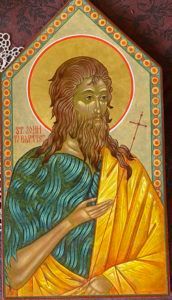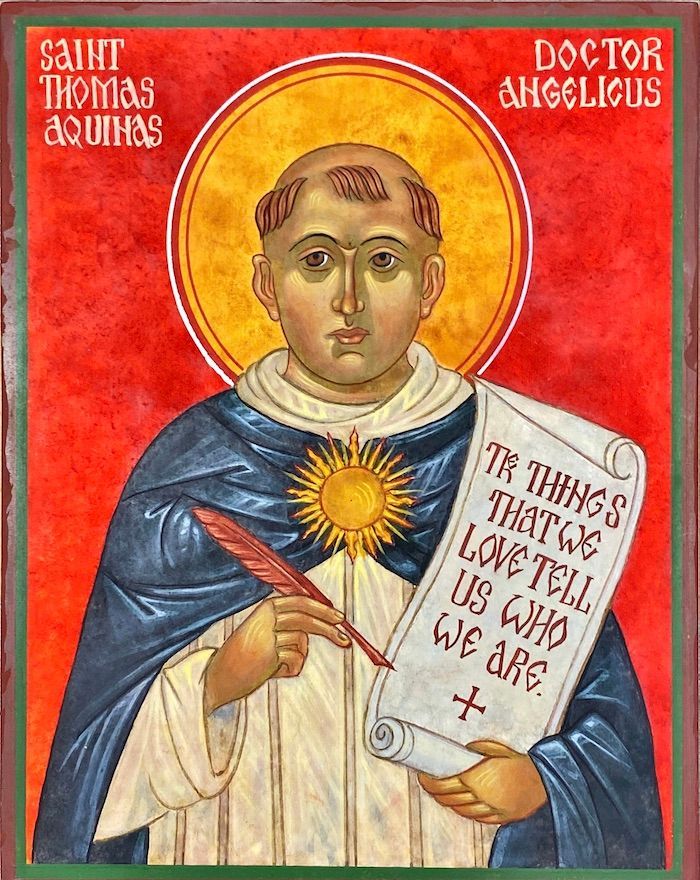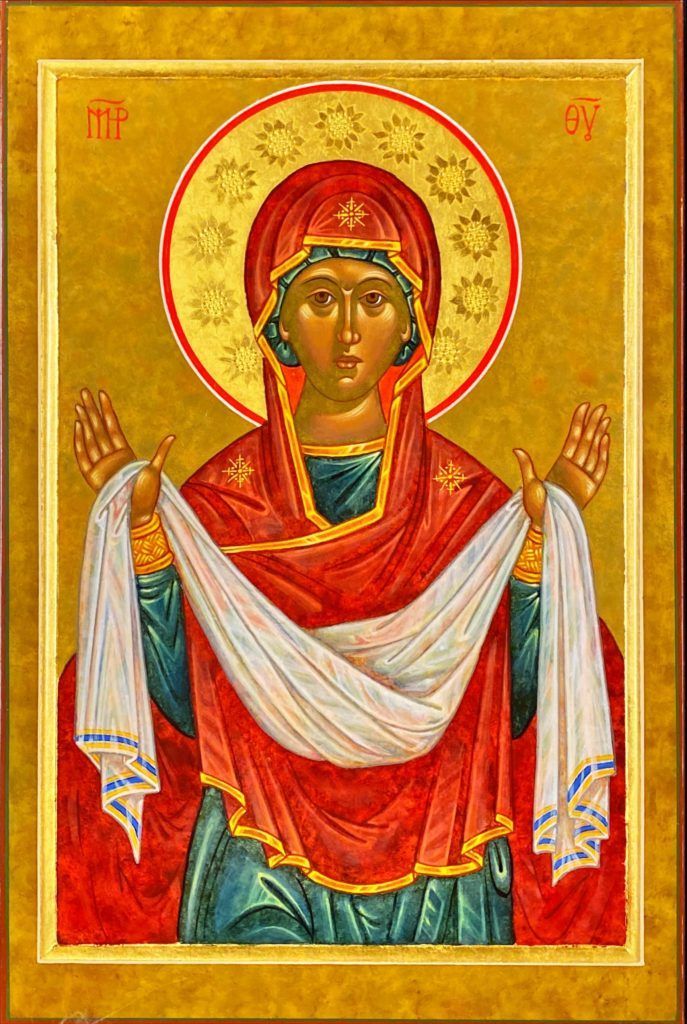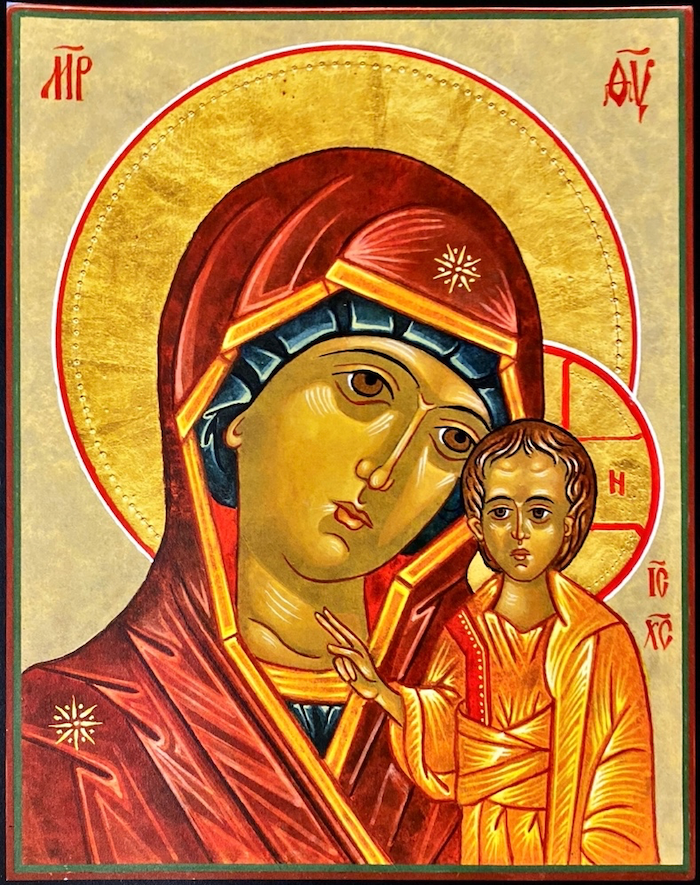God Writes Straight with Crooked Lines, Part 2
God Writes Straight with Crooked Lines, Part 2
Read Part 1 of this blog post.
In the 1980s and early 1990s, I regularly attended decorative painting workshops in Eureka, California, taught by JoSonja Jensen, an amazing American folk artist who is a master of folk art styles from all over the world (josonja.com). One of the workshops I attended was on Russian fairy tale painting, and in the course of that workshop, JoSonja demonstrated her interpretation of an icon of Mary and the Christ Child. I was so drawn to that simple image! In 1989 or 1990, I was also struck by an article in the New Orleans Times Picayune about the icons in the Greek Orthodox Cathedral in New Orleans, painted by an iconographer from Greece. I thought then, “I would love to learn to paint icons — but I can’t go to Greece to study painting.”
In the spring of 1993, I was back in Eureka attending another decorative painting workshop at JoSonja’s. At that time, her son Mark was the editor of their decorative painting magazine The Artist’s Journal. Mark said that they had just learned that there was an icon painter in Pennsylvania painting icons with JoSonja’s line of acrylic paint. They wanted to do an article about him for their publication, and they were looking for someone to write the article. I volunteered to go to Pennsylvania, meet the iconographer, and write the article for the journal.
In June 1993 I attended my first iconography workshop, at the St. John of Damascus School of Sacred Art at the Antiochian Village in Ligonier, Pennsylvania, taught by Philip Zimmerman (www.philzicons.com). Upon registering for the workshop, I was sent a list of six books to read before the workshop. I read all of them, and the knowledge I gained from those books served me well as I began my studies. Below is the list of the books:
- The Meaning of Icons by L. Ouspensky & V. Lossky
- The Icon: The Image of the Invisible by Fr. Egon Sendler
- On the Divine Images by St. John of Damascus
- On the Holy Icons by St. Theodore the Studite
- The Painter’s Manuel of Dionysius of Fourna
- An Iconographer’s Patternbook: The Stroganov Tradition
Taking that first icon-painting workshop opened a new world for me. It gave a new focus to my painting and to my life. I read every book on icons that I could get my hands on — and in 1993 there were not nearly as many books available as there are today. I took several more workshops with Philip, both at the Antiochian Village in Pennsylvania and at Beckwith Retreat Center in Fairhope, Alabama. I also began painting icons at home, in acrylics. Phil taught and painted in a Macedonian style. The JoSonja paints, similar to traditional gouache paints, adapted well to that style of iconography.
The more I read and studied about icons, the more I became attracted to the Russian style of icon painting. The historic Russian icons, painted in the traditional medium of egg tempera, did not look at all like the acrylic work that I was doing. At one of Phil’s workshops, I met Fredi Haldors, a delightful lady who had studied at the Icon Institute at Mt. Angel Benedictine Abbey near Portland, Oregon. She put me in touch with the teacher, iconographer Charles Rohrbacher (New Jerusalem Workshop) from Juneau, Alaska. At that time, Charles was teaching iconography both at Mt. Angel Abbey in Oregon and at the St. John Neumann Retreat Center in Tallahassee, Florida. Charles had studied with Orthodox iconographer Dmitry Shkolnik, and also with Byzantine Catholic iconographer and Jesuit Father Egon Sendler of the Centre d’Etudes Russes in Paris. I drove from Lafayette to Tallahassee in 1994 and took my first workshop with Charles. Charles was an inspirational spiritual guide as well as an accomplished icon painter, and the world of Byzantine iconography continued to expand for me under his guidance. He introduced me to painting in egg tempera.
I returned to study with Charles again in Tallahassee in 1995, and there I met Jude Fischer, one of the icon painters from Madonna House in Combermere, Canada. She later sent me information about a Russian icon painter, Vladislav Andreyev (www.prosoponschool.org) who lived in New York and taught icon painting workshops throughout the United States. Vladislav and his son Dmitri were teaching an introductory icon painting workshop at St. Mary of the Pines Retreat Center in Chatawa, Mississippi in January 1996. I attended that workshop and fell in love with Vladislav’s style of painting — egg tempera horizontal-floating technique that approximated much of the work of the 15th century Russian icon painters.
For the remainder of the 1990s, I continued to study both with Charles Rohrbacher at Mt. Angel Abbey in Oregon and with Vladislav Andrejev and his sons Dmitri and Nikita at St. Mary of the Pines in Mississippi. I also read and studied everything about icons that I could find, and I painted icons at home. Doing the work at home, on one’s own, is critical to the development of an iconographer. As students, we learn in workshops and classes, but we make the work our own at home, practicing what we have learned, training our hands to handle the brush and our eyes to see the essence of the designs and our spirits to submit to the will of the Master.
As a result of my reading and studies, I realized that I was coming to know more about the Orthodox Church than I knew about my own Roman Catholic Church. So I enrolled in a study program in ministry with Loyola University (LIMEX) in New Orleans, and in 1999 I received a Master’s Degree in Pastoral Studies, with a ministry focus in iconography. (I was the only student to complete the degree work in the field of iconography, studying the role of the Byzantine icon in the Roman Catholic Church.)
Over the years, I have attended workshops and studied with other master iconographers:
- Heather MacKean (http://heathermackean.com), a gifted Canadian iconographer who studied with students of Leonid Ouspensky;
- Marek Czarnecki (Seraphic Restorations) and the Russian master iconographer Ksenia Pokrovsky (Wikipedia)of Hexameron (https://www.hexaemeron.org )
- Peter Pearson (Wikipedia), an American priest and author of two painting books on icons;
- the talented young Romanian iconographer Daniel Neculae (http://danielneculaeiconographer.blogspot.com)
- the Russian masters Anton & Katya Danieko (icona-skiniya.com) and the Russian gilding specialist Oksana Stanovskaya of the Russian Gilding School (Russian Gilding School)
Each of these masters had special gifts to share with me. Each broadened my treasure of knowledge and understanding. Each left a mark on my life. But my home throughout the years remained with Vladislav Andrejev and the Prosopon School of Iconology, where I continue to study, to coordinate workshops, and now to teach as an affiliate teacher.
In 2012 I opened my studio in my back yard — an old German prisoner-of-war barracks building from World War II that was moved onto the property by the original owners of my home in the 1950s. Here I teach icon painting to both local students and out-of-towners. Together we paint and study, share our joys and sorrows, and pray together for ourselves and for the life of the world.
I am now at a point in my life where I am passing on what I have received to a younger generation. We are all part of that living tradition of icon painters that has endured from the earliest centuries of our Church — from the days when Christ walked the earth and touched his face to a linen cloth, the days when the first image of Our Lord was painted by some unknown artist, the days when St. Luke met Our Lady and learned the great story of our salvation. From those days to now, and into the future. Maranatha! Come, Lord Jesus!

